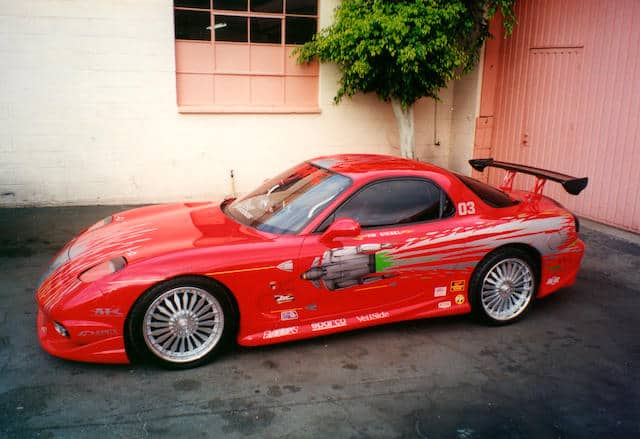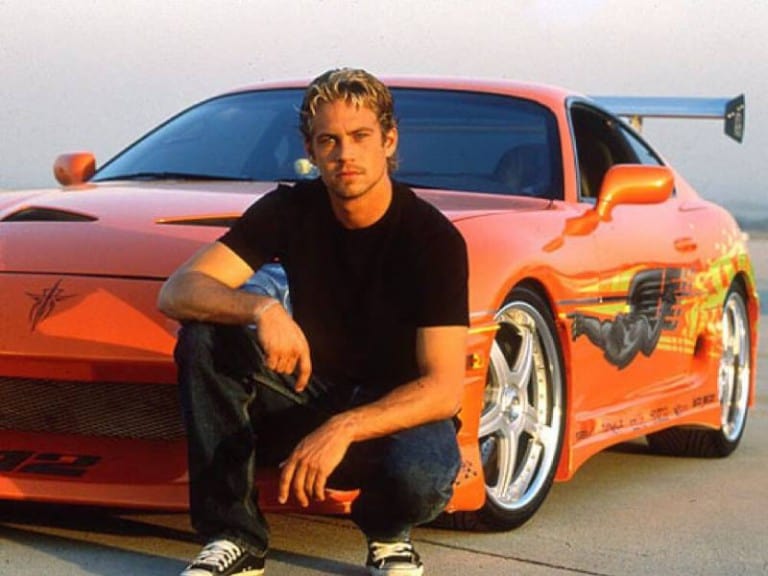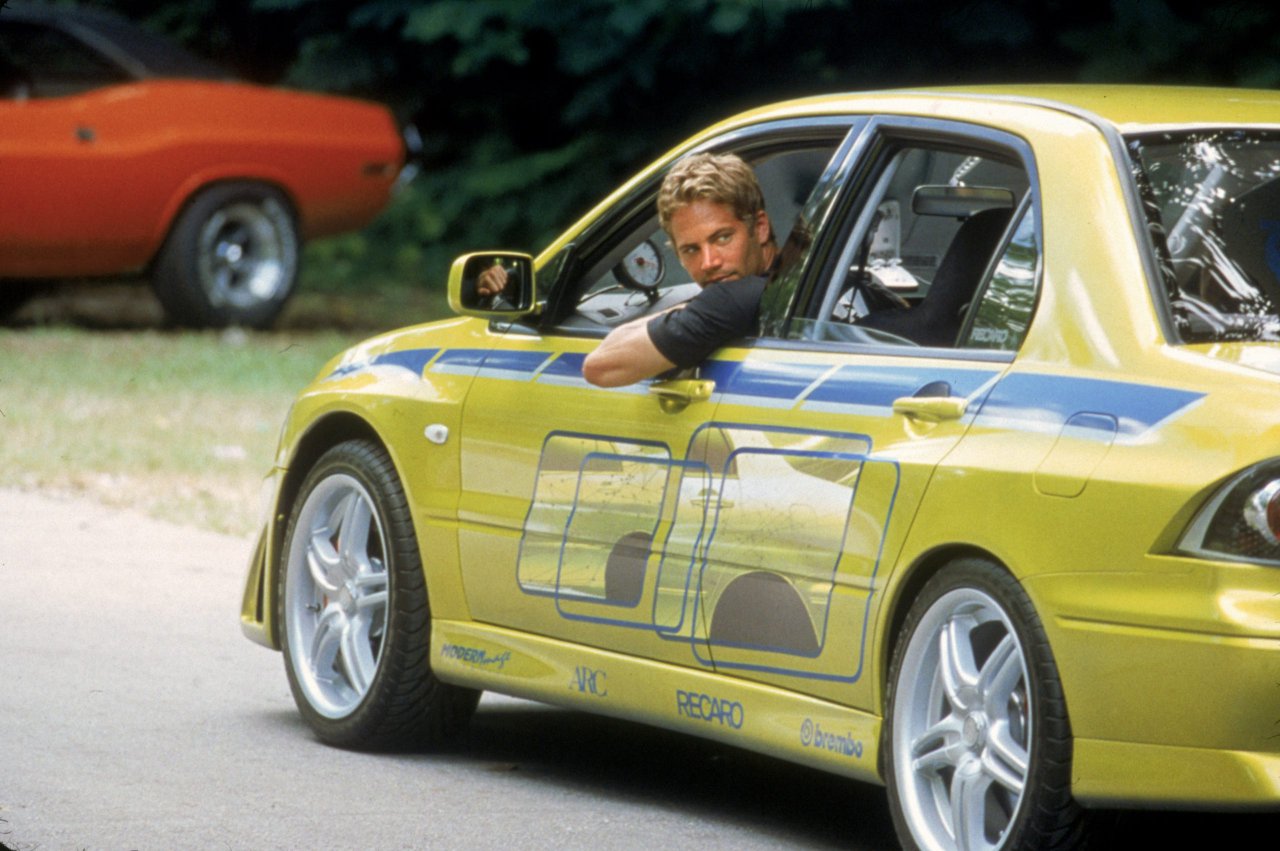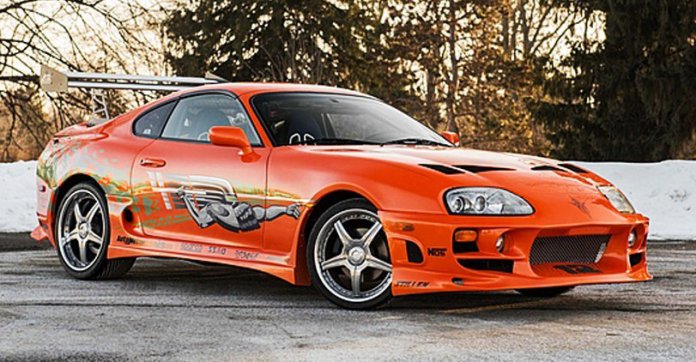It’s been about 20 years since the premiere of The Fast and the Furious, when we saw Vin Diesel in a classic Dodge Charger race the late Paul Walker in a Toyota Supra across a set of train tracks, barely missing the fast-moving train.
The film’s wild success ignited the interest in Japanese sports cars in America, ultimately skyrocketing the demand and, of course, the prices for Japanese Domestic Market vehicles featured in the film. Today, a stock, 100 percent original Gen. 4 Toyota Supra can cost anywhere between $70,000 and $100,000. And according to Hagerty Price Guide, the typical 1995 Mitsubishi Eclipse GSXs, like Walker’s first car in the film, has been subject to a 73.9 percent climb in price, to about $20,700.

1995 Mitsubishi Eclipse GSX | Hotcars 
1993 Mazda RX-7 | Bonhams
Another infamous car from the film is Diesel’s 1993 Mazda RX-7, which has climbed from $13,900 in 2001 to $29,900 in good condition and upwards of $44,500 in excellent condition today.

“The most shocking climb, however, is among the trio of 1993 Honda Civic coupes used by Toretto and company during their daring daylight hijackings,” Hagerty reports. “After hitting near rock bottom in 2001 with a street value of $4,400, these once-disposable economic rides are trading hands for an average sum of $13,800. That’s a 213.6 percent increase.”
It’s unavoidable to mention the impact Walker’s tragic passing on immortalizing his character in Fast and Furious, Brian O’Conner, and the cars he drove. On November 30, 2013, Walker was a passenger in a Porsche Carrera GT a friend was driving. They were leaving a charity event that Walker helped organize to help typhoon victims. The car was traveling at perhaps twice the speed limit when it ran into a concrete lamppost and burst into flames. Walker and his friend, Roger Rodas, both died.

“By the time of his death in 2013, he (Walker) was probably the third or fourth most important part of The Fast and the Furious juggernaut,” melmagazine.com reported in a story about the succession of Paul Walker tribute car shows taking place.
The avclub website added: “What people seem to be memorializing isn’t Walker so much as his role in the films, which offered gearheads an action franchise that spoke specifically to them in a pop culture landscape that feels less interested in luxury vehicles than it used to.”
In an article celebrating his life, the Los Angeles Times interviewed Fast and Furious fan Joel Perez, who became hooked on cars after watching the first film at age 11. When he turned 18, Perez purchased a Mitsubishi Evo 9, all because Walker’s character drove one in the second Fast and Furious.

“I said, ‘I’m going to get that car one day’,” Perez explained. “Everybody said, ‘You’re not going to get that car, it’s expensive to get and maintain.’ But because of Paul Walker, I said, ‘Man, I’m going to get that car’.”
Edward Loh, editor of Motor Trend magazine, praised Walker for his love of JDM cars: “Paul Walker had no business loving the cars as much as he did. In some ways, it didn’t make sense. He’s a Hollywood actor – he could be driving Bentleys and Rolls Royces. Instead, he’s about this GT-R. These were vehicles that he really was passionate about…This guy stayed true.”
Fast and Furious’ popularity continues to grow even though the films are not cinematic masterpieces. However, from an inclusive cast to a highly glamorized world of illegal street racing filled with JDM cars, the movies brought together a new generation of gearheads.
Craig Lieberman, techincal director for the first two Fast and Furious films, said that the years following those movies were the golden years for the tuner segment.
“Sales at Sparco went up 1,500 percent, Greddy couldn’t stop selling the exhausts that were on these cars. Everybody wanted the exact parts that were on the cars. IT went on for years. It drove $150-plus billion in sales for aftermarket parts from the car-modifying hobby,” said Lieberman.
The Fast and Furious franchise has no end in sight with Fast & Furious 9 being released this May and No. 10 10 to debut some time in 2022.




The cars are cool…..but some of the ones now on the streets with the fart car exhaust are hideous sounding….phew